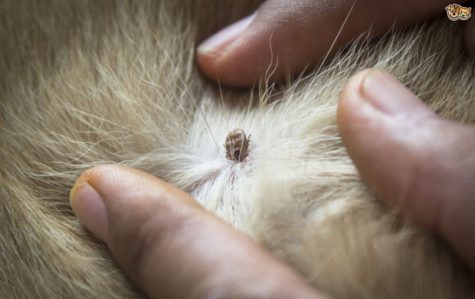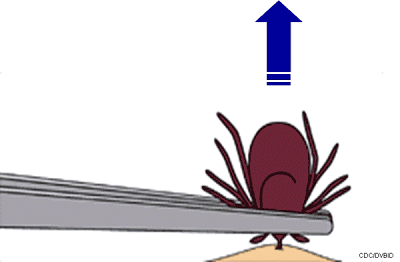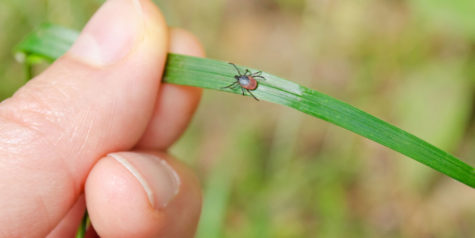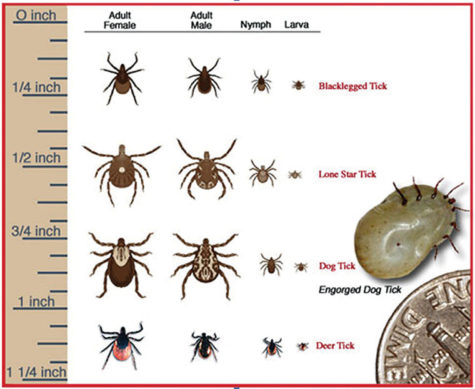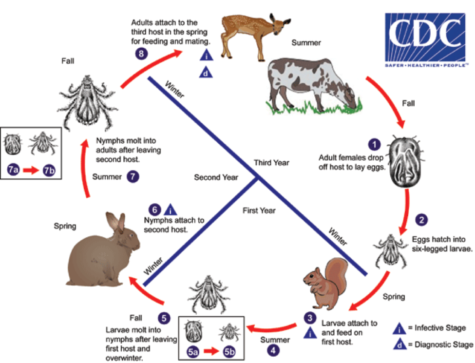Doggie Wellness
17 Common Plants Poisonous to Dogs
- Amaryllis
Common garden plants popular around Easter, Amaryllis species contain toxins that can cause vomiting, depression, diarrhea, abdominal pain, hypersalivation, anorexia and tremors.
- Autumn Crocus
Ingestion of Colchicum autumnale by pets can result in oral irritation, bloody vomiting, diarrhea, shock, multi-organ damage and bone marrow suppression.
- Azalea/Rhododendron
Members of the Rhododenron spp. contain substances known as grayantoxins, which can produce vomiting, drooling, diarrhea, weakness and depression of the central nervous system in animals. Severe azalea poisoning could ultimately lead to coma and death from cardiovascular collapse.
- Castor Bean
The poisonous principle in Ricinus communis is ricin, a highly toxic protein that can produce severe abdominal pain, drooling, vomiting, diarrhea, excessive thirst, weakness and loss of appetite. Severe cases of poisoning can result in dehydration, muscle twitching, tremors, seizures, coma and death.
- Chrysanthemum
These popular blooms are part of the Compositae family, which contain pyrethrins that may produce gastrointestinal upset, including drooling, vomiting and diarrhea, if eaten. In certain cases depression and loss of coordination may also develop if enough of any part of the plant is consumed.
- Cyclamen
Cylamen species contain cyclamine, but the highest concentration of this toxic component is typically located in the root portion of the plant. If consumed, Cylamen can produce significant gastrointestinal irritation, including intense vomiting. Fatalities have also been reported in some cases.
- English Ivy
Also called branching ivy, glacier ivy, needlepoint ivy, sweetheart ivy and California ivy, Hedera helix contains triterpenoid saponins that, should pets ingest, can result in vomiting, abdominal pain, hypersalivation and diarrhea.
- Kalanchoe
This plant contains components that can produce gastrointestinal irritation, as well as those that are toxic to the heart, and can seriously affect cardiac rhythm and rate.
- Lilies
Members of the Lilium spp. are considered to be highly toxic to cats. While the poisonous component has not yet been identified, it is clear that with even ingestion of very small amounts of the plant, severe kidney damage could result.
- Marijuana
Ingestion of Cannabis sativa by companion animals can result in depression of the central nervous system and incoordination, as well as vomiting, diarrhea, drooling, increased heart rate, and even seizures and coma.
- Oleander
All parts of Nerium oleander are considered to be toxic, as they contain cardiac glycosides that have the potential to cause serious effects—including gastrointestinal tract irritation, abnormal heart function, hypothermia and even death.
- Peace Lily (AKA Mauna Loa Peace Lily)
Spathiphyllum contains calcium oxalate crystals that can cause oral irritation, excessive drooling, vomiting, difficulty in swallowing and intense burning and irritation of the mouth, lips and tongue in pets who ingest.
- Pothos
Pothos (both Scindapsus and Epipremnum) belongs to the Araceae family. If chewed or ingested, this popular household plant can cause significant mechanical irritation and swelling of the oral tissues and other parts of the gastrointestinal tract.
- Sago Palm
All parts of Cycas Revoluta are poisonous, but the seeds or “nuts” contain the largest amount of toxin. The ingestion of just one or two seeds can result in very serious effects, which include vomiting, diarrhea, depression, seizures and liver failure.
- Schefflera
Schefflera and Brassaia actinophylla contain calcium oxalate crystals that can cause oral irritation, excessive drooling, vomiting, difficulty in swallowing and intense burning and irritation of the mouth, lips and tongue in pets who ingest.
- Tulip/Narcissus bulbs
The bulb portions of Tulipa/Narcissus spp. contain toxins that can cause intense gastrointestinal irritation, drooling, loss of appetite, depression of the central nervous system, convulsions and cardiac abnormalities.
- Yew
Taxus spp. contains a toxic component known as taxine, which causes central nervous system effects such as trembling, incoordination, and difficulty breathing. It can also cause significant gastrointestinal irritation and cardiac failure, which can result in death.
More Info:
For a more definitive list, complete with pictures, visit the ASPCA Toxic and Non-Toxic Plants List.
This list contains plants that have been reported as having systemic effects on animals and/or intense effects on the gastrointestinal tract.
Please note that the information contained in our plant lists is not meant to be all-inclusive, but rather a compilation of the most frequently encountered plants. If you think that your animal is ill or may have ingested a poisonous substance, contact your local veterinarian or our 24-hour emergency poison hotline directly at 1-888-426-4435.
Keeping Ticks Off Your Pet Naturally
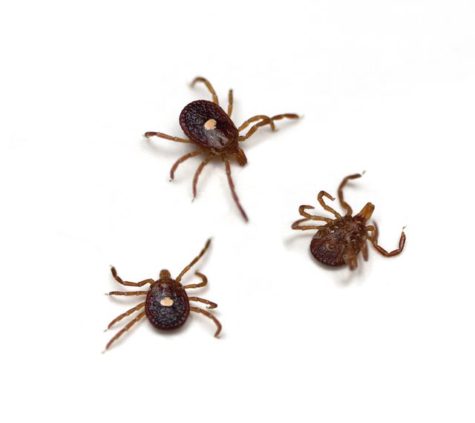 The best way to keep ticks off your pet is to regularly inspect your pet whenever he or she comes in from outdoors, and remove any ticks you might find. Flea combs are ineffective against fleas, but can be used to help remove ticks if you have a short haired dog. Flea combs are not practical for use on large hairy dogs. Wash your pet’s bed frequently. You might also want to take a look at our post on keeping ticks out of your yard.
The best way to keep ticks off your pet is to regularly inspect your pet whenever he or she comes in from outdoors, and remove any ticks you might find. Flea combs are ineffective against fleas, but can be used to help remove ticks if you have a short haired dog. Flea combs are not practical for use on large hairy dogs. Wash your pet’s bed frequently. You might also want to take a look at our post on keeping ticks out of your yard.
Essential oils can be used to repel and in come cases kill ticks (and fleas as well). When choosing an essential oil, be sure to choose 100% pure. Cheaper synthetic versions may have the same aroma, but they will not have the same effect as a pure high grade essential oil.
Important note:
These essential oil solutions should only be used on dogs (or humans). If your dog is elderly, ill, prone to allergies, pregnant, or nursing puppies, please consult your veterinarian before using any of the suggested essential oils. Also, please remember, just because it is safe for a dog, does not mean it is safe for your cat. Do not use any essential oil on a cat without thoroughly researching and making sure it is safe.
Oil Blends:
Aromatherapy oils, like basil, lemon, cinnamon, cedar, lavender, and pennyroyal are the natural repellent for ticks. Mix one drop each of the three oils chosen and pure almond oil. Stir it well, and soak a cloth in it. Wrap this cloth on your pet.
Citrus:
Citrus is abundantly found in oranges and lemon. All you need to do is to prepare natural repellent oil from these citrus fruits. Take out peels of lemon or orange and boil them. Let it cool down naturally. Apply it on the affected area of pets.
You can also add juice of lemon or orange in a cup of water. Allow it to boil for some time. In the solution, add 5-15 drops of lemongrass oil. Shake it well and let it cool down. Apply it gently on the affected area.
Oranges are rich in citric acid which is a natural tick repellent.. Squeeze out some juice from 1-2 oranges. Apply it on pet’s body with the help of a cotton ball. You can also apply some orange oil on the affected area.
Rose Geranium:
One of the most popular tick repellents is rose geranium essential oil. Add 20 drops of rose geranium essential oil in three tablespoons of almond oil. Mix it well and apply a few drops on your pet’s fur, especially around the collar.
Neem Oil:
Neem oil is the most common oil, preferred for discouraging ticks from attaching to your pet. The anti-bacterial and antiseptic properties of neem oil are meant to fight against ticks. All you are required to do is to pour a few drops of neem oil on your palm and gently rub it on.
Dogs with sensitive skin can also be treated with neem oil by diluting it. For diluting, you have to mix neem oil with any light carrier oil, like jojoba or almond oil. Pour a little quantity of mixed oil on palm and rub it gently on pet, covering the affected area.
You can also prepare a spray with the help of organic neem oil. You have to mix ½ ounce of organic neem oil with ½ or ¼ ounce of mild detergent or soap. Stir it well and add this solution to two cups of water. If you want a stronger solution, mix 2 ml soap with two cups of water. Then, add 5 ml neem oil to it. Fill it in a spray bottle and use it immediately.
Neem oil is also helpful in removing ticks from humans. Just apply a few drops of neem oil gently on the skin, especially covering the affected area. You will then need to manually remove the tick.
Note– Use the spray immediately as it can last maximum for 8 hours.
Apple Cider Vinegar
Apple cider vinegar can be a beneficial remedy. You just have to prepare a spray with the help of apple cider vinegar. Pour 8 ounce of apple cider vinegar in a bowl. Add 4 ounce of warm water in it. Stir it well adding half teaspoon each of salt and baking soda. Fill the solution in a spray bottle and shake it well before use.
You can also use apple cider vinegar with lavender oil. Mix 1/4 cup of apple cider vinegar in one cup of water. Add 15 drops of lavender oil in it. Mix it well and apply it on your pet’s fur.
It can also be used with neem oil. Take 500 ml water and add 4 tablespoons of apple cider vinegar to it. Stir the mixture well adding two tablespoons of neem oil. Apply this solution on dogs to kill ticks. You can also spray this mixture on curtains, walls, and carpets.
Witch Hazel
Witch hazel is a natural tick repellent. Instead of using alcohol on pet, use witch hazel. Just mix witch hazel and lemon eucalyptus oil in 10:1 ratio, stir the solution well and fill it in a spray bottle. Spray it on your pet to kill or repel ticks.
You can also prepare a spray by pouring 8 ounce of distilled water in a bottle. Add half teaspoon of vegetable glycerin and 30-40 drops of essential oil in it. Add enough witch hazel to fill the bottle. Shake it well and use to kill ticks and fleas or bugs, present in bed, curtains, mattress, etc.
Lemon Juice
The citrus acid, present in lemon, helps in removing ticks naturally. You just have to use a fresh lemon against ticks. Squeeze out some fresh lemon juice directly on ticks or affected area of pet. (Note: you will still have to remove the tick manually).
You can also prepare a spray with ingredients, like lemon juice, peppermint oil, and citrus oil. Mix all the substances equally and spray it on required places.
You can also prepare a disinfectant solution for bathing your pet, with the help of lemon juice. Squeeze out the juice of lemon in a cup of water. Also add peels and pulp in the water. Put it on simmer for a few hours. Pour this solution in regular bath water.
You can slice a lemon and put it in a bowl of boiling water. Leave it overnight. Dip a sponge in the solution and apply it on troubling area of your pet.
Cedar Oil Spray
To get rid of ticks, use a cedar oil spray. Cedar oil acts as a repellent to harmful ticks. Use cedar oil spray, once in a day. Apply it directly on pet’s ears, collar, and tummy area.
Vegetable Oil
Vegetable oils are rich in sulfur, which acts as a natural repellent for ticks. You have to mix two teaspoons of vegetable oil with 10 drops of peppermint essential oil. Add one teaspoon of dish washing liquid. Stir the mixture well. Apply it on pet’s body. Do not apply near eyes, ears, or mouth. For best results, practice this method once a week.
Garlic
Garlic is a strong repellent for ticks. However, in order to be an effective deterrent, the Garlic must be consumed in sufficient amount. Unfortunately, dogs cannot tolerate raw garlic. Garlic is more toxic than onions and can cause anemia or damage red blood cells in dogs. Cooked garlic can be added to the dog’s food. You can also use garlic powder in place of raw garlic. Simply add 1/8 teaspoon of garlic powder per pound of regular dog food. Be sure to check with your veterinarian before using this method.
Eucalyptus Oil
Eucalyptus oil is very effective against ticks. To prepare eucalyptus spray, boil 15-20 leaves of eucalyptus in approximately 1 litre water. Let it boil for 10 minutes. After boiling, let it cool down at room temperature. Strain the solution in a spray bottle. Use the solution to kill ticks.
You can also make spray by using eucalyptus oil. Fill a spray bottle with 4 ounces of distilled water. Add 10 drops of eucalyptus oil. Shake well before use.
Clove
The anti-inflammatory and anti-bacterial properties of clove help in killing ticks. It has been used for removing ticks and fleas from pets. Pour some clove oil on palm and rub it gently on pet’s fur. A spray can also be prepared with the help of some peppermint oil, clove extracts and water.
Tea Tree Oil
The medicinal properties of tea tree oil help in repelling ticks on pets. Tea tree oil can be used in different ways to discourage ticks. Add a few drops of tea tree oil to your pet’s regular shampoo.
You can add a few drops of tea tree oil to a spray bottle filled with water, and spray it directly on pet’s body. Else, put a few drops of tea tree oil directly on an embedded tick with the help of a dropper. Now, remove the tick with the help of tweezers.
Note: The natural tea tree oil can cause irritation if applied directly to the skin.
Cinnamon Oil
Cinnamon oil works as a natural repellent against ticks and fleas and very useful in getting rid of ticks. All you are required to do is to apply some cinnamon oil directly on the affected area. Be careful to avoid eyes, or sensitive areas.
You can also add 80 drops of cinnamon oil to one ounce of water. Fill the solution in a hose sprayer. Gently spray it in the lawn. This will work against ticks.
Cinnamon oil acts as a protecting shield against ticks on human skin. Just rub cinnamon oil on your skin. Again, be careful to avoid eyes, or sensitive areas.
Source: Home Remedy Shop
Finding And Removing Ticks
The best way to find ticks on your pet is to run your hands over the whole body. Check for ticks every time your pet comes back from an area you know is inhabited by ticks. Ticks attach most frequently around the pet’s head, ears, neck, and feet, but are by no means restricted to those areas.
If you find an embedded tick, do not simply grab its body and pull, as the tick’s barbed hypostome (feeding tube) may break off and remain in the bite. Applying chemicals or flame to the tick is not a good idea because, while it may make the tick let go, it can also cause the tick to spit blood back into the wound, possibly sending disease germs into the bloodstream in the process.
The best way to remove a tick is to use rubbing alcohol and a pair of hemostats or sharp tweezers. Dab rubbing alcohol on the tick, and then use the hemostats or tweezers to take hold of the tick as close to the dog’s skin as you can; pull slowly and steadily. Try to grab it where its mouth-parts enter the skin and pull gently without letting go. It will eventually releases its hold by withdrawing its barbed mouth-part from the skin.
Try not to leave the tick’s head embedded in the dog’s skin. Do not apply hot matches, petroleum jelly, turpentine, nail polish, or just rubbing alcohol alone because these methods do not remove the ticks and they are not safe for your pet.
Once you have removed a tick, do not try to crush it – unengorged ticks are flat and very hard to crush, while engorged ticks will burst and release blood. Instead, you should flush the tick down a drain or seal it in a jar. (It can be useful to keep the tick to show to a doctor in case you or your pet gets sick from the bite.) Some people kill and preserve ticks by dropping them into bottles of rubbing alcohol; if you do this, do not use the alcohol in that bottle for anything else.
After you pull a tick off, there will be a local area of inflammation that could look red, crusty, or scabby. The tick’s attachment causes irritation. The site can get infected; if the pet is scratching at it, it is more apt to get infected. A mild antibiotic, such as over-the-counter triple antibiotic ointment can help, but usually is not necessary. The inflammation should go down within a week. If it stays crusty and inflamed longer than a week, it might have become infected.
Although ticks can transmit diseases, they are usually nothing more than a nuisance. The best approach is to prevent them from embedding, and once embedded, to remove them quickly. As long as you stay on top of the situation, your pets should cruise right through the tick season with no problems.
sources: Veterinary Partner and Regional Pest Management
Keeping Ticks Out of Your Yard
Deer ticks are most abundant in the woods where hosts for the tick flourish and ticks find high humidity levels necessary for survival. On lawns, most deer ticks (82%) have been recovered within 9 feet of the lawn edge, especially areas adjacent to woods, stonewalls, or ornamental plantings. Fewer ticks are found in the sunny, manicured areas of the lawn. Ticks may also be found in groundcovers such as Pachysandra.
Create a tick safe zone by altering the landscape to increase sunlight, reduce tick habitat and discourage rodent hosts. Create a clearly defined, manicured border. A dry wood chip, tree bark, mulch, or gravel barrier between woods and lawn can reduce tick migration into the lawn. The removal of leaf litter at the lawn perimeter also can help reduce the number of I. scapularis nymphs on the lawn. Landscape modifications include:
- Keep grass mowed.
- Prune trees, mow the lawn, and clear leaf litter and brush, especially along edges of the lawn, stonewalls, and driveways.
- Move play sets away from the woodland edge.
- Restrict groundcover in areas frequented by family.
- Adopt some landscaping practices such as gravel pathways, mulches, decking, stone, tile, and other hardscapes around the home.
- Wildflower meadows, herbal gardens, etc. have very few ticks and may be an acceptable alternative to grass in some areas.
Treating the yard and outdoor kennel area, if any, is an important tool in the arsenal against ticks. There are products containing fenvalerate, that can be used to spray the outdoor area. According to the CDC, Fenvalerate is not harmful to the environment, it is however, toxic to animals, pets, and people, so please use common sense.
What is a tick?
Ticks are small parasitic arachnids that live by sucking the blood of mammals, birds, and other animals. Not only a major nuisance to humans and domestic animals, ticks are also responsible for transmitting many diseases, including Lyme disease, Rocky Mountain spotted fever, and Ehrlichiosis. Although there are hundreds of tick species, the major species of concern in the United States are the deer tick, the American dog tick, the brown dog tick, the Rocky Mountain wood tick, and the lone star tick.
The deer tick (Ixodes scapularis), also known as the blacklegged tick, lives in the eastern and middle U.S. and also has a close relative on the West Coast. It attacks many animals including humans, deer, and pets. Known for infecting humans with Lyme disease, the deer tick can also transmit human granulocytic ehrlichiosis and babesiosis.
The American dog tick (Dermacentor variabilis) is found east of the Rockies as well as on the West Coast. It prefers dogs but will also bite humans and other large mammals. It can transmit Rocky Mountain spotted fever to humans. The brown dog tick (Rhipicephalus sanguineus) lives throughout the U.S., and though it rarely bites humans, it is a highly annoying pest to dogs and other pets. It is not known to transmit disease to humans.
The Rocky Mountain wood tick (Dermacentor andersoni) occurs in the Rocky Mountain region of the U.S. and southwestern Canada. It transmits Rocky Mountain spotted fever to humans and blood parasites to cattle and dogs. It also can inject dangerous toxins into the host as it feeds.
The lone star tick (Amblyomma americanum) is found in the southeastern and mid-Atlantic United States. It has a painful, itchy bite and can transmit ehrlichiosis, tick-borne typhus, and tularemia to humans.
Appearance and habits:
A tick has eight legs, a tiny head, and a flat, seed-shaped body that swells up like a balloon as it feeds. Ticks that are only a few millimeters long before they bite can grow up to half an inch when engorged with blood. Their appearance varies depending on species, sex, and life cycle stage, but they are generally dark-colored, sometimes with distinctive patterns.
In each stage of a tick’s life cycle (larva, nymph, and adult) it searches for a host, using its ability to sense heat, light, and carbon dioxide. The tick often crawls to the top of weeds, grass, and other vegetation so that it can grab a passing host animal with its front legs. Once it has grabbed onto a host, it may bite any part of the body but usually prefers to crawl to the top of the host and bite the head, neck, or ears. The tick uses fanglike mouth parts called chelicerae to pierce the skin, and inserts a feeding tube called a hypostome. The hypostome is barbed, making it very hard to remove the tick by pulling. The tick drinks blood until it is full, then drops off the host to molt or lay eggs.
People typically acquire ticks in the spring and summer, while walking through tall grass, woods, and weedy areas. Many ticks can smell animals and are thus attracted to paths and trails where their potential hosts travel. They can also infest homes if carried indoors by pets.
The Life Cycle of a Tick
Most types of ticks require three hosts during a two or three year lifespan. Each tick stage requires a blood meal before it can reach the next stage. Hard ticks have four life stages: egg, larva, nymph, and adult. Larvae and nymphs must feed before they detach and molt. Adult female ticks can engorge, increasing their weight by more than 100 fold. After detaching, an adult female tick can lay approximately 3,000 eggs.
Adult females drop off the host to lay eggs after feeding, usually in the fall. During the egg-laying stage, ticks lay eggs in secluded areas with dense vegetation. The eggs hatch within two weeks. Some species of ticks lay 100 eggs at a time, others lay 3,000 to 6,000 per batch.
Eggs hatch into six-legged larvae and overwinter in this larval stage. When spring comes, the larvae move into grass and search for their first blood meal. They attach themselves to their first host, usually a bird or rodent. Later in the summer, engorged larvae fall onto the ground and molt into nymphs, usually in the fall.
Nymphs (which are generally the size of a freckle) remain inactive during winter and start moving again in spring. During the following spring, the nymphs seek out and attach to the second host, usually a rodent, pet, or human.
The nymphs feed on the second host and after this blood meal, fall off the host and molt into adults – off the host – in the late summer or fall. Throughout the autumn, the male and female adults try to find a host, which is again usually a rodent, pet, or human. If adults cannot find a host animal in the fall, they can survive in leaf litter until the spring.
The next spring, adults seek out and attach to a third host, which is usually a larger herbivore, carnivore, or human. The adults feed and mate on the third host during the summer.
The adult female feeds for 8 to 12 days. The female mates while still attached to her host, then both ticks fall off, and the males die. The female remains inactive through the winter and in the spring lays her eggs in a secluded place.
Females may reattach and feed multiple times. The three hosts do not necessarily have to be different species, or even different individuals. Also, humans may serve as first, second or third hosts.
source: Parasites and Health at the Center for Disease Control
Holiday Toxins and Dangers

This is the time of year when pets can be exposed inadvertently to toxic substances or tempting taste treats that can be dangerous.
One “toxic” plant you don’t have to worry much about is the poinsettia, though. These plants are either nontoxic or only slightly irritating to the gastrointestinal tract, depending on the reference source. On the other hand, mistletoe berries are poisonous and it is best to be very careful when hanging mistletoe so that pets are not exposed to the berries. Even one or two berries of this plant may be fatal. Even the products used to help plants make it through the holidays can be a problem.
Some of the solutions used to make the Christmas tree last through a long holiday season can be pretty irritating to mouth or stomach tissues. If you add these to the water in your Christmas tree stand you should be sure that pets can not drink the water.
Plants are not the only problems. Holiday food treats and decorations can be dangerous to pets. It takes a fairly large amount of milk chocolate to cause poisoning problems in dogs and cats but a whole box of chocolates is likely to cause diarrhea at the least and may be toxic to smaller pets.
Tinsel strands seem to be very attractive to cats and these will often cause severe problems, often requiring surgical removal to prevent the death of the cat if they are ingested. For some reason, almost every season a dog or cat in our practice eats a Christmas tree ornament or even one of the light bulbs off the tree. Chewing on the extension cords to the tree lights or the electric train around the tree sometimes leads to problems, too.
The abundance of food found at holiday tables presents a danger even if it isn’t cooked by your mother-in-law who believes in partially thawing the turkey then cooking it a 200 degrees. We see a definite increase in pancreatitis around the holidays due to pets getting fat laden table scraps. At least one dog a year manages to eat the whole turkey carcass and has a major case of constipation in a day or so. Try to resist the urge to cover the pet’s food with the extra gravy and put the trash out of reach of pets after an attractive meal!
Pets sometimes have a really hard time adjusting to the increases in family activity around the holidays. They may not handle the stress of house guests well. Often just scheduling a few minutes at approximately the same time each day to spend playing with your dog or reviewing those obedience exercises can make the holidays a lot easier for an anxious canine. Cats are a little harder to reassure and it is sometimes best just to make sure they have a safe haven in the house where the guests can’t find them, especially the very young guests. Make sure their litter pan is private, too.
If you are going to board your pet for the holidays make sure their vaccinations are current well before the time for boarding and check to see if there are special vaccination requirements at the boarding kennel, such as requiring Bordetella (kennel cough) vaccination. Make sure you have all the contact numbers for wherever you will be written down for the kennel, pet sitter or veterinary hospital. You might even consider giving your vet written permission to treat your pets in your absence, especially if your relationship with your vet is not close enough to be sure he or she would be comfortable caring for the pets without your permission.
Do not tranquilize pets for air travel if you are taking them with you, unless you are absolutely certain it is necessary. A recent review of pet deaths during airplane trips revealed that most of the pets who died had been sedated. The effects of sedatives are intensified at higher altitudes and even though cargo holds are pressurized they are at a lower atmospheric pressure than is found at ground level. If you do have to sedate a pet follow the veterinarian’s directions EXACTLY. It could save your pet’s life!
If you take a little time to prepare and think about the special risks holidays impose your pet should be safe. Just in case, make sure you know the number of the emergency veterinary hospitals in your are and can drive by it to be sure you can find it an emergency when you may not be thinking as clearly as on an ordinary day.
Source: Michael Richards, DVM


